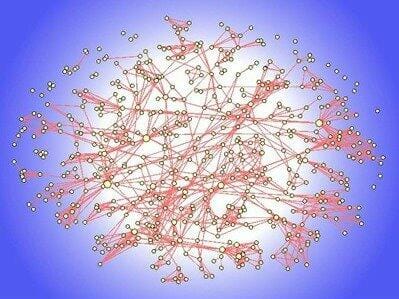Largest Protein Interaction Map Discovers New Complexes

A collaborative research effort of different laboratories from Canada, Germany and the US has obtained the largest protein interaction map available. The researchers have studied different organisms, from amoeba to humans, and identified approximately 25% of all protein interactions that happen inside the cell. The findings, published in the journal Nature, will help understand the molecular cause of many diseases.
Proteins are macromolecules that perform a large number of cellular functions. Enzymes work as catalyzers that accelerate biochemical reactions like DNA replication, repair, transcription, and almost all metabolic reactions. Many proteins work as signal transductors, allowing cell communication and response to stimuli. Ligand binding can have different roles, like antigen destruction or molecule transportation. Other proteins have structural roles, conferring rigidity to a mainly liquid environment. Many proteins work together, constituting molecular machineries. Despite the advances in the field, most protein roles are still unknown.
Dr. Emili from the University of Toronto and Dr. Marcotte from the University of Texas at Austin have developed a new technique that represents a huge advance in discerning protein function. The researchers combined biochemical fractionation and mass spectrometry to scrutinize the individual components of multiprotein complexes. They could build a network of proteins and infer a protein´s role based on its interactors. The study was carried out in nine metazoan species with fully sequenced genomes. Integrating all the information, they obtained a map of more than one million protein interactions. The map revealed different conservation levels of protein assemblies. Housekeeping complexes have been there for a billion years; other assemblies are very well conserved but have incorporated new members; and a few linked to multicellularity are totally new.
The map increases the number of known interactions by more than 10-fold. Some new complexes, like Commander, have been found. Genes coding for Commander components were known to cause mental impairment when mutated, but the molecular relationship and mechanism were unknown. Commander is found in other species too, so the researchers mutated its components in tadpoles. They discovered anomalies in brain cell disposition during development. This finding could help understand the ailment in humans.
Source: genengnews
